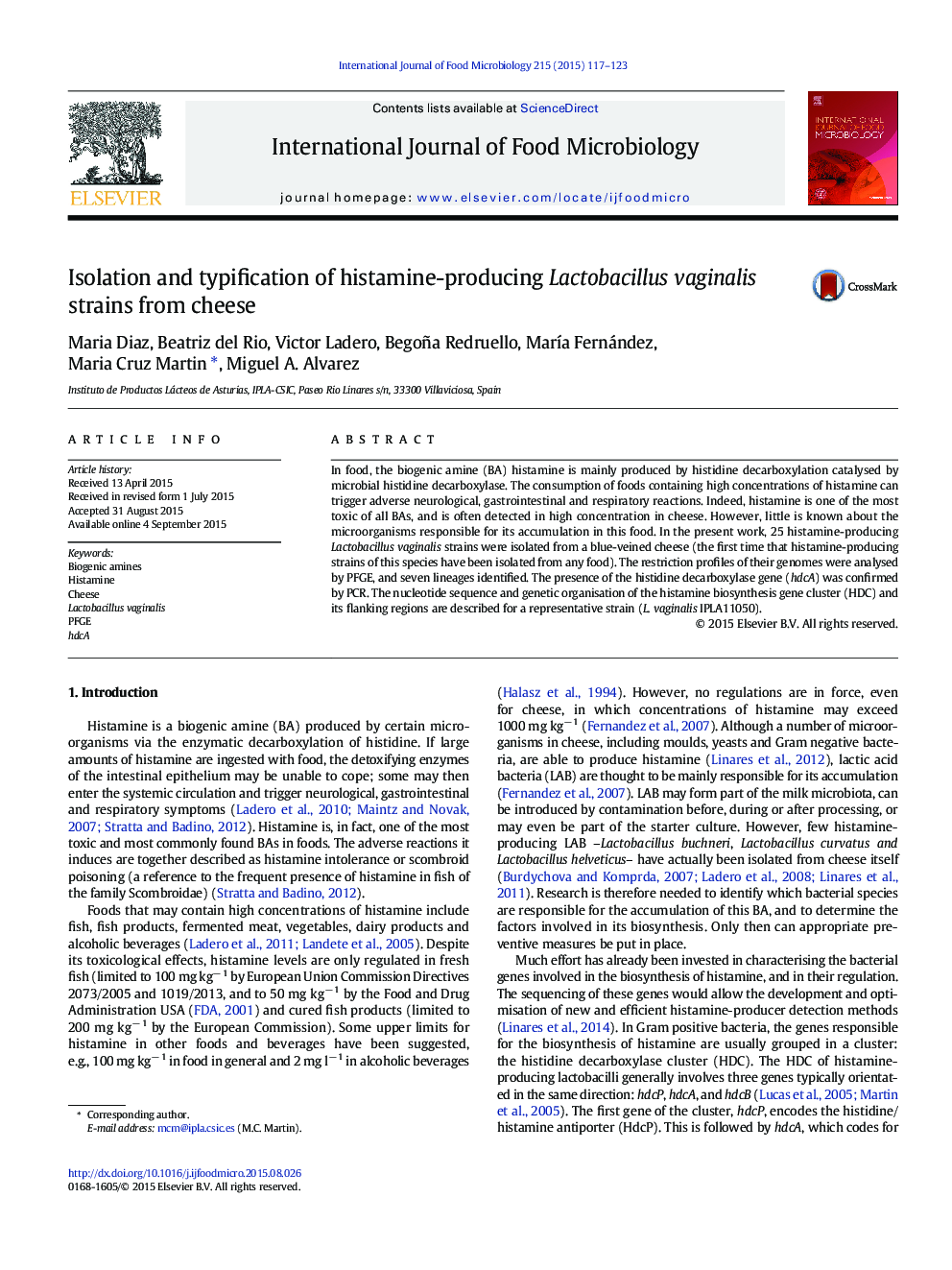| Article ID | Journal | Published Year | Pages | File Type |
|---|---|---|---|---|
| 6289836 | International Journal of Food Microbiology | 2015 | 7 Pages |
Abstract
In food, the biogenic amine (BA) histamine is mainly produced by histidine decarboxylation catalysed by microbial histidine decarboxylase. The consumption of foods containing high concentrations of histamine can trigger adverse neurological, gastrointestinal and respiratory reactions. Indeed, histamine is one of the most toxic of all BAs, and is often detected in high concentration in cheese. However, little is known about the microorganisms responsible for its accumulation in this food. In the present work, 25 histamine-producing Lactobacillus vaginalis strains were isolated from a blue-veined cheese (the first time that histamine-producing strains of this species have been isolated from any food). The restriction profiles of their genomes were analysed by PFGE, and seven lineages identified. The presence of the histidine decarboxylase gene (hdcA) was confirmed by PCR. The nucleotide sequence and genetic organisation of the histamine biosynthesis gene cluster (HDC) and its flanking regions are described for a representative strain (L. vaginalis IPLA11050).
Related Topics
Life Sciences
Agricultural and Biological Sciences
Food Science
Authors
Maria Diaz, Beatriz del Rio, Victor Ladero, Begoña Redruello, MarÃa Fernández, Maria Cruz Martin, Miguel A. Alvarez,
